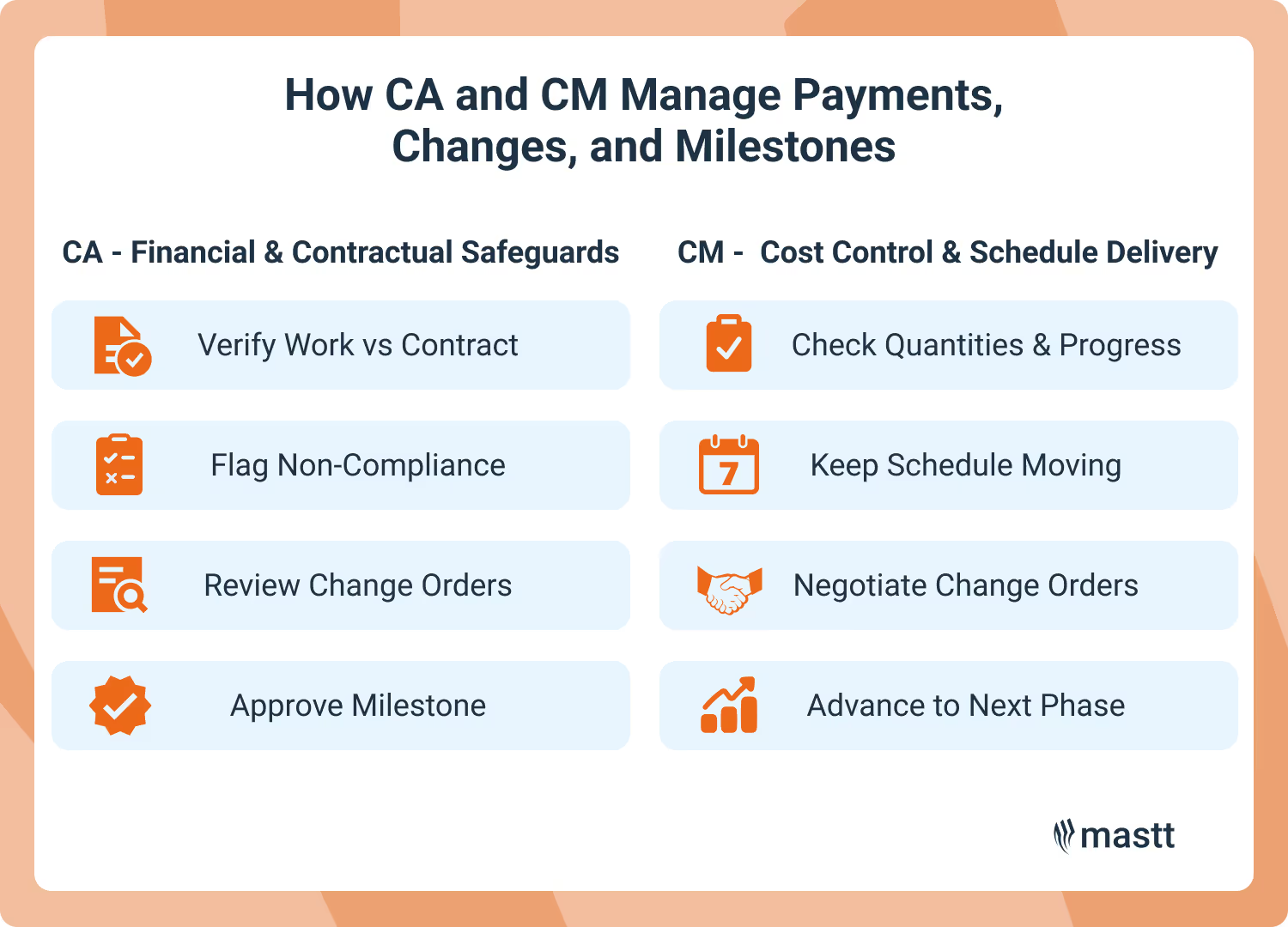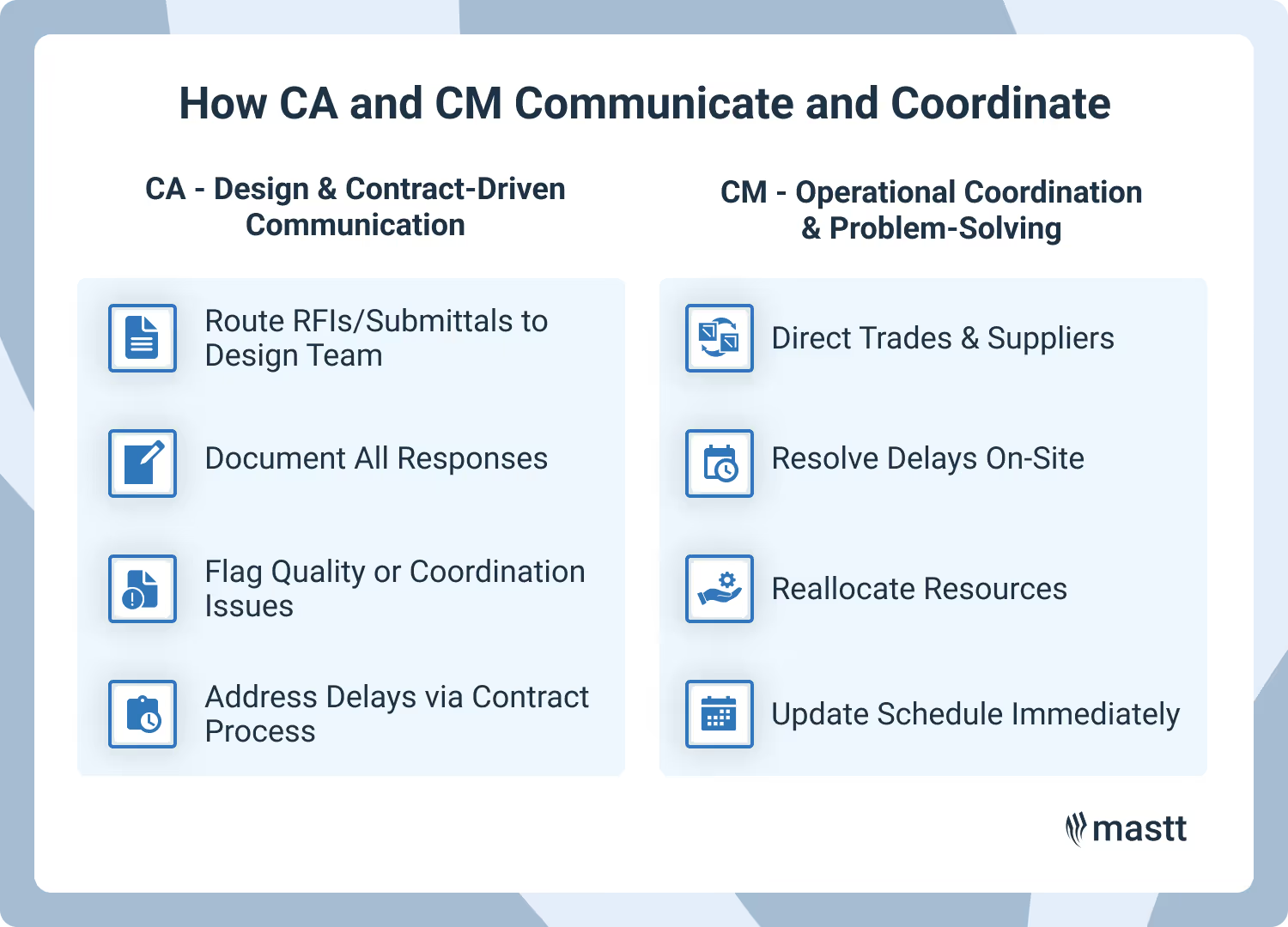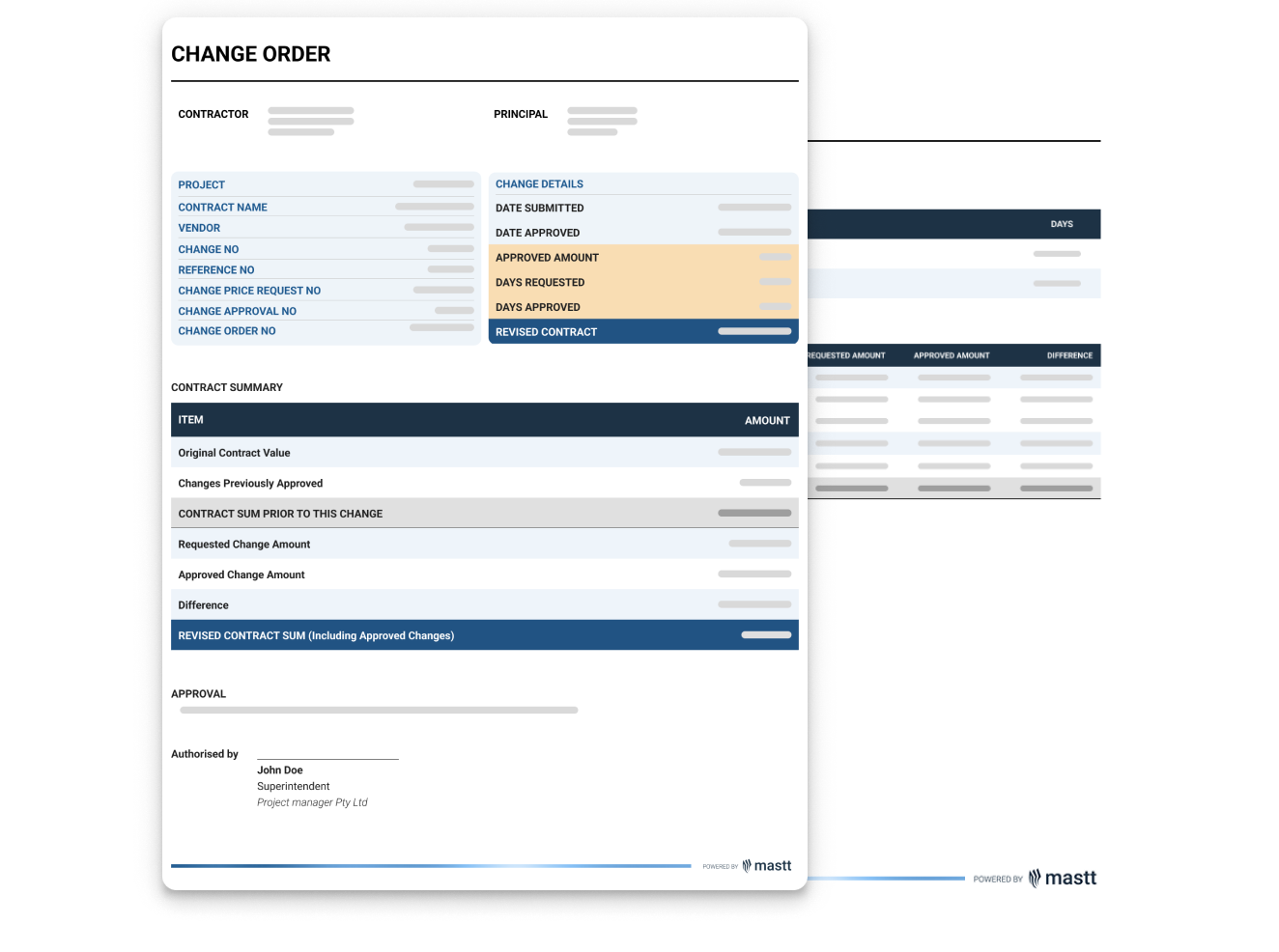Choosing between construction administration (CA) and construction management (CM) can significantly impact a construction project’s quality, schedule, and budget. While both roles contribute to successful project delivery, they serve distinct functions.
This article explains the differences in scope, authority, and responsibilities for each role. You’ll see how they handle payments, change orders, and communication. You’ll also learn when to hire one or both to meet your project goals.
Construction Administration vs Construction Management
Construction administration (CA) ensures the build matches the design, construction contract, and regulatory requirements. Construction management (CM) drives the project from planning to completion, focusing on cost, schedule, and project delivery.
Here’s how the construction administration and construction management compare:
In many construction projects, these roles also differ in contractual alignment and accountability. A CA often reports directly to the project owner as the design team’s representative, while a CM may work under a separate agreement.
CA vs CM: Contract Oversight, Site Visits, and Progress Reporting
Construction Administration ensures all work complies with approved designs, specifications, and contract terms. Construction Management drives day-to-day site operations, resources, and schedules to deliver the project on time and within budget.
CA’s Role in Compliance and Quality Verification
Construction administration protects design accuracy and enforces contract requirements. CA provides independent oversight to confirm work meets technical and legal standards before it moves forward. Key responsibilities include:
- Reviewing work against approved plans and specifications
- Flagging and correcting non-compliant elements
- Conducting formal site inspections for compliance
- Documenting findings in inspection reports
Example: A construction administrator halts installation of a misaligned façade panel, avoiding a $40,000 rework and preserving the building’s architectural quality.
CM’s Role in Site Coordination and Progress Tracking
Construction management oversees operational performance and schedules. CM manages construction activities in real time to keep construction crews productive and prevent delays. Their responsibilities cover:
- Directing trades to maintain output
- Sequencing tasks to prevent conflicts
- Assigning labor and equipment for optimal resource allocation
- Monitoring schedules and making adjustments
Example: A construction manager moves crews from a delayed zone to another work area, recovering two days on the schedule and preventing knock-on delays in later phases.

CA vs CM: Payments, Change Orders, and Key Milestones Approval
Construction administration ties payment, change order approval, and milestone sign-off directly to contract compliance and design protection. Construction management ensures these same actions support project cost control, schedule performance, and uninterrupted progress.
CA’s Role in Financial and Contractual Safeguards
The construction administrator focuses on protecting the project owner from overpayment, poor-quality work, or premature approvals. Payments and changes move forward only when work meets all contractual and design requirements. Their responsibilities include:
- Comparing payment requests to approved construction drawings, specifications, and actual progress
- Flagging incomplete or non-compliant work for immediate correction
- Reviewing change orders for design alignment and technical compliance
- Approving milestones only after all construction contract obligations are met
Example: Acting as the owner’s compliance gatekeeper, the CA signs off on a structural milestone only after it meets design and engineering standards, avoiding a $50,000 correction.
CM’s Role in Cost Control and Schedule Delivery
The construction manager keeps cash flow steady, coordinates changes efficiently, and moves milestones forward without delay. They make operational adjustments to protect budgets and timelines. Key tasks include:
- Verifying quantities and progress before approving payments
- Matching invoices to delivered materials and completed work
- Pricing and negotiating change orders to control costs
- Confirming readiness for the next construction phase and mobilizing resources immediately
Example: In a cost-saving move, the CM recommends a flooring change order that saves $12,000 and prevents a three-day schedule slip by fast-tracking procurement.

CA vs CM: Project Communication and Coordination
Construction administration focuses on communication that safeguards design intent and meets contractual obligations. Construction management coordinates trades, suppliers, and schedules for efficient delivery.
CA’s Role in Design and Contract-Driven Communication
The construction administrator manages exchanges that affect compliance, quality, and documentation. Their role centers on formal processes and accurate record-keeping. Core activities include:
- Routing RFIs, submittals, and queries to the design team
- Recording and verifying responses for compliance
- Flagging coordination issues that may affect quality
- Addressing delays or disputes through formal contract channels
Example: Acting as the project’s compliance authority, the construction administrator resolves an RFI on a door specification. They also formally document a window installation dispute to ensure the contract is upheld.
CM’s Role in Operational Coordination and Problem-Solving
The construction manager’s communication is focused on keeping the construction site productive and issues resolved quickly. Their day-to-day duties often involve:
- Directing trades and suppliers to stay on schedule
- Resolving conflicts or delays in real time
- Adjusting work sequencing to avoid downtime
- Escalating only when contractual or design input is needed
Example: As the on-site operations lead, the construction manager reschedules electrical work to avoid a drywall clash. They also reallocate crews after a delivery delay, recovering three days on the schedule.

Construction Management vs Construction Administration: Fees Comparison
Construction management fees are standalone costs, usually calculated from the project’s total value. Construction administration fees are often included in the architect’s broader contract and tied to the construction phase. Both vary depending on scope, project type, and complexity.
CM fees reflect hands-on site and resource management, with costs scaling as scope and complexity increase. CA fees focus on quality and compliance oversight, often included within design services. They are more predictable but still influenced by project scale and demands.
When to Choose CA, CM, or Both
The right choice depends on where you most need control. If your priority is contract compliance and design quality, CA is the safer fit. If you need active site coordination, schedule control, and budget management, CM delivers more value.
The table below outlines common project scenarios and which role is best suited for each.
Identify your project’s highest risks before choosing. If design accuracy and contract enforcement are critical, CA will serve you best. If smooth daily operations and timely delivery are the priority, CM is the stronger option. For high-value or complex projects, using both can give you full visibility and control.
Balancing Design Protection and Operational Delivery
To balance design protection and operational delivery, treat quality and efficiency as equal priorities from the start. Define responsibilities for compliance checks and schedule control, and align inspections with milestones to avoid delays. Use a shared project management platform like Mastt so both roles can track progress, flag issues, and coordinate actions in real time.
















